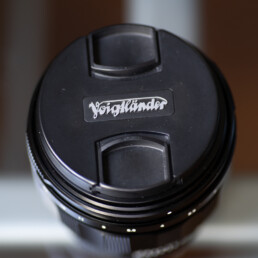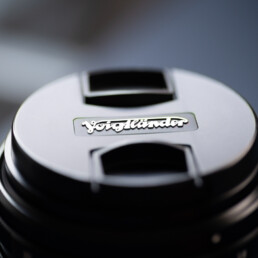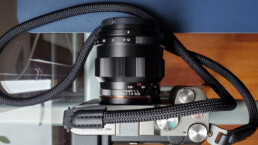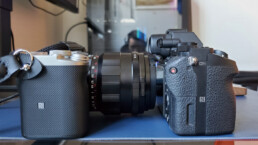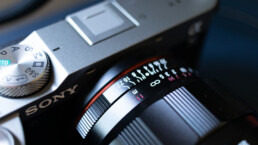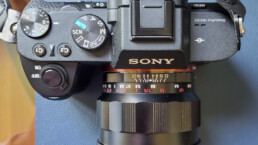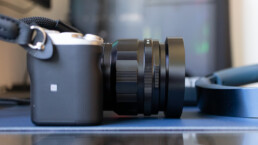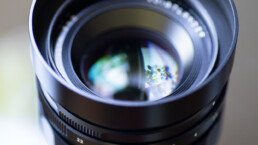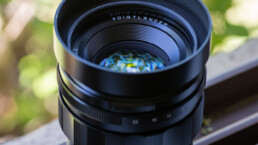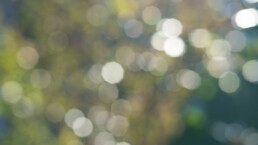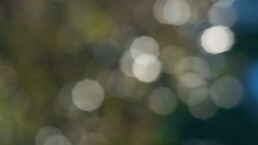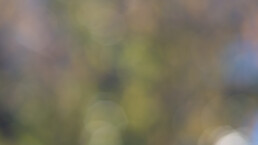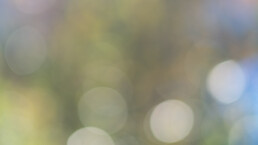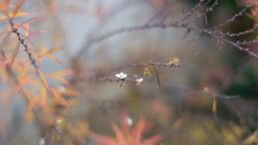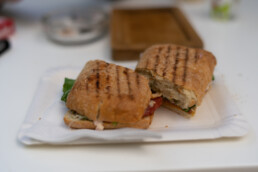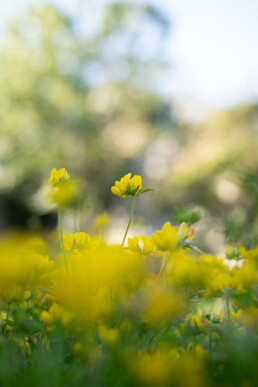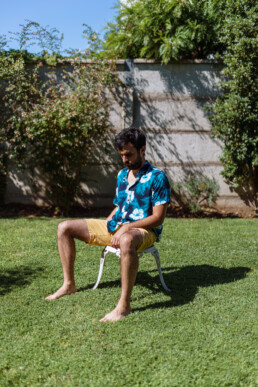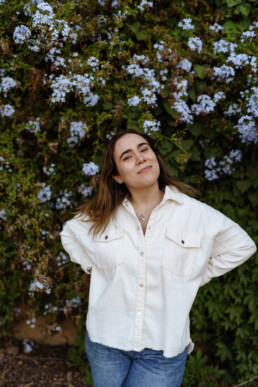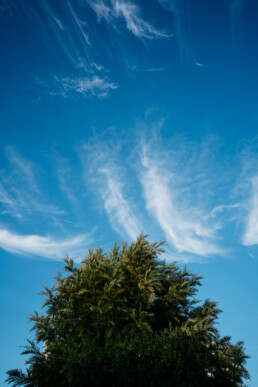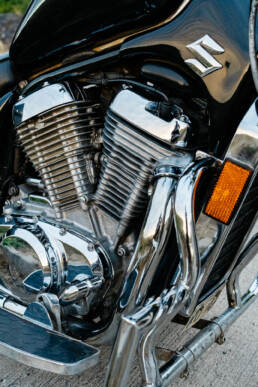Voigtländer 40mm f1.2 Nokton Aspherical – Review
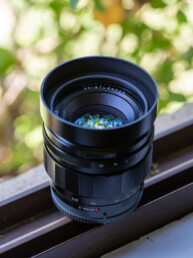
Characteristics
- Lens Mount: FE (Full frame)
- Type: Prime lens
- Focusing: Manual
- Construction:
- Lens Groups: 6
- Lens Element: 8
- Aperture Blades: 10
- Min. Aperture: 1.2
- Max Aperture: 22
- Min. Focal distance: 0.35 m
- Filter Size: 58 mm
- Length: 59.3 mm
- Weight: 420 gr
- Hood: Yes, included in the retail package.
- Extras.
- Manual aperture ring can be de-clicked.
- Focus peaking is activated automatically when focusing through the lens.
- Price (new): USD 1049 / February- 2022
- Price (used): USD 700 - USD 1100 / January - 2022
- Ebay.com *
- * : Affiliate Link
- Ebay.com *
Introduction
As a lens brand, Voigtländer have maintained an excellent reputation creating lenses in different mounts and camera generations. Nowadays, Voigtlander (Voigtländer) lenses are produced by Cosina (Japan) maintaining the line of top notch construction and image quality.
Although the 40mm length is an unusual one (from 35 of 50) this offers great versatility as an everyday carry, excelling in portraits and landscapes. Thanks to his large aperture, this lens is ready for a plethora of task.
In this review we’re going to check the Sony E mount version. Let see how it handles.
Manual
Updates
May 6, 2022: Added Bokeh section.
Construction
At this price point, one can expect nothing but the best regarding construction. This lens is all metal (barrel, mount, hood) and you can feel it. At 420gr is neither light or heavy but it couples really well in the camera (tested in α7 II or α7c). Although, far from being a portable lens, even with the hood it is quite acceptable and easy to carry.
The lens has its marking engraved, the F stops on the outer ring and the distances markers in feet and meters. The lens posses a mechanism that allows a seamless rotation of the aperture or in other words, a “clickless” mode.
Part of the appeal of this lens aperture and the compact size. To achieve a 1.2 aperture you need a lot of glass, and the 8 elements in 6 groups denote that. The 2 aspherical elements in part allow this an introduce desired correction that enable the use of this lens in the maximum aperture with an excellent center performance.
One possible criticism in this section is that the lens do not possess weather protection. At this price point is debatable whether this is necessary or not in this lens, but a little protection would be nice.
On camera
As said, at 420gr is neither light or heavy. Probably with taller bodies the camera will tip towards the front of the lens. I’ve tested in a Sony α7 II and α7c and this is the case. Although in the case of the α7c is barely noticeable.
One aspect that is often discussed about this lens, is that the grip to remove the lens is in an awkward position, making it more difficult than it should to get it out of the camera. I have to say, that using it for a long time, you get used to the motion.
Hood
The hood, as it shown in the pictures, is not that big. Depending on the position of the light source can offer some protection from it. Rather, I recommend using the hood to protect the lens and the front element itself. It doesn’t add too much to the lens and can be deciding factor between a dent in the hood or the lens itself.
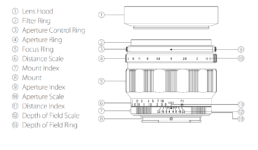
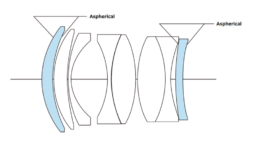
Handling
Manual Focus
This lens posses electronic contacts that communicate information to the camera. This translate in two things, if you have the magnifying option activated, whenever you rotate the focusing ring the zoom kicks in and second the distance meter appears in the screen, whether you have activated the magnifying option or not.
The focus ring is big and easy to grasp, the resistance rotating the ring is smooth and precise. This allows for fine adjustment of the focus and with muscle memory one can accomplish this fairly easy. There’s about 130° of rotation available and the lens extends about half a centimeter from infinity to the closest focus distance of 0.35 m.
There’s hardly a better experience in modern manual focus lenses than this lens can offer.
Aperture ring
The aperture ring works wonders in this lens, is tactile feedback is on point and you have stops between the usual ones to adjust accordingly (between f/5.6 and f/8, f/6.3 and f/7.1 are available).
As previously stated there’s an option to activate a clickless mode of the aperture ring.
To accomplish this follow the next steps.
- Push the aperture control ring (3) towards the aperture ring (4)
- Turn the aperture control ring 180 degrees.
- Aling the 2 indexes (9) and (11)
- The white dot indicate a click stop mode
- The yellow line indicate a clickless mode
F-Stops
At minimum distance and with the highest aperture value (f/1.2) the bokeh is buttery smooth. The focus plane is razor sharp and any vibration would result in miss focusing. High shutter speed are highly recommended or a sturdy tripod.


























RAW photos are developed in Lightroom with the default profile for Voigtlander NOKTON 40mm F1.2 Aspherical
Bokeh
Some extreme examples of the bokeh produced by the lens are shown here. Overall very pleasant experience and can add a lot to an scene when used right.
Distortion
At higher aperture values this lens has a strong falloff mainly in the borders. Depending on the scene this can be useful, like in portraits or closeup / macro photography, but at lower F stop values this falloff tends to disappear and the overall image image gets an even distribution of exposure.
Nevertheless, Lightroom and other photo editors include the correct lens profile for this lens. In my opinion, using this profile improves considerable the overall exposure values in higher f stops.
Conclusions
I love this lens, has been stuck to my camera ever since I bought it. Being somewhat compact and with a focal length that allow it to be an everyday carry, is an obvious choice for me. The construction and feeling of use, as stated, is superb and the manual focus is as good at it gets in modern lenses. Higher apertures are not always useful in all lenses, but in this case the f1.2 aperture really is. I have used it in extreme cases and the photos obtained are usable and with a surprising level of detail (in the center of the image). That is, if you nail the focus.
There aren’t many native alternatives in this focal range, either you adapt an old lens or buy an M mount with an adapter. Another option would be to go down to 35mm or go up to 50mm.
Either way, the high price is no joke. I can not tell you if it is worth it or not, that is something that each one must decide. But as a personal opinion, I do feel that it’s worth every penny I paid for it. In particular, it is worth checking the sales of used lenses from a well-known or reputable store (I bought it from amazon, used).
As a final note, I think that the photos produced by this lens speak for itself. Thy have a character and a distinctive signature that can be enhanced by the eye of the photographer. Voigtländer maintain their reputation and quality and why a lot of photographers recommend their lenses.



